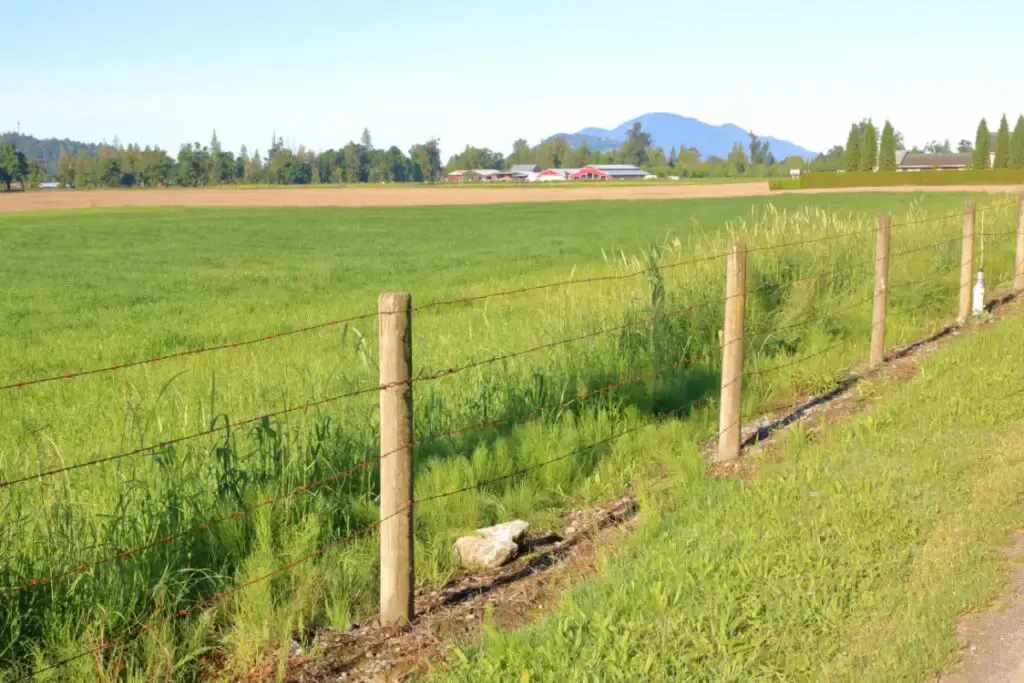Over the years, property lines have been the subject of real estate deals, neighborly relations, and legal disputes. When clearly defined, they help ease the process of property identification. But without them, disputes will linger.
Property markings help to protect investors and owners who wish to sell or buy land. They are also vital for those who may want to subdivide a plot of land or add a building for commercial or residential use.
Before marking property lines, you need to determine precisely where your property line is located. If it is not clear, you may need to hire a surveyor for assistance.
Also, if building a fence is your preferred way of marking your property, check to see if you require any fence or easement permits.

You may have come across various ways of marking property lines. But most of them seem bland and uninspiring such that you do not want to replicate them on your land.
You would rather have something vivid on the boundary of your property. If this is you, you are reading just the article you need. In this post, we explore eleven creative ways to mark property lines.
11 Creative Ways to Mark Property Lines
Here is a list of creative ways to mark property lines:
1. Fences
If you decide to use a fence to mark property lines, you will have several choices.
Fences not only act as noise barriers, but they also help to prevent unwanted trespassers. When considering security, you can go with the traditional chain link fence, although it provides less privacy.
Wooden fences are another option, and they provide both privacy and security. However, your wooden fence will require painting from time to time. You can also go for low maintenance fences like PVC vinyl, although they may cost more.
2. T-Posts
Using T-posts is probably one of the best ways to mark property lines or even a corner. T-posts are tall and not expensive to purchase.
Once you install your T-posts on the ground, you can improve visibility and aesthetics by painting them in bright colors.
You can also cover your T-posts with PCV piping with a cap to make them thicker and increase paint coverage. Doing this also improves the post’s visibility.
You may also decide to place rocks around the posts to help reinforce the setup.
3. Wooden Posts

Using wooden posts is another way you can mark property lines. You can use any type of wooden post, provided its length is at least 6 feet.
Before using a wooden post, ensure it has been treated so it will last longer.
In place of a 6-foot-tall wooden post, you can use a thick wooden 4″ x 4″, although it may cost more than a T-post. The cost aside, installing wooden posts will require more work if you want them to remain in the ground for long.
4. Evergreen Plants
Evergreen plants can play a vital role when used to mark property lines. Evergreen plants can produce foliage you can admire throughout the seasons of the year. It is this same trait that enables them to offer you year-round privacy.
They might be called evergreens, but that does not mean you have to stick to the color green. Depending on your goals and tastes, you can plant evergreen shrubs in mixed borders, trim hedges, or rows that you can leave untrimmed.
Some examples of evergreen shrubs you can use for marking property lines include photinia, camellia, lavender, juniper, aucuba, holly, and fatsia.
5. Flowerbeds

Another creative way you can mark your property lines is by using flowerbeds. When placed along the edges of your fence, flowerbeds add extra color to your property.
You can also beautify flowerbeds with different decorations like lawn ornaments and statues.
6. Mixing Evergreen and Flowering Shrubs
You can mix flowering shrubs and evergreen plants for maximum results. Mixing flowering shrubs and evergreen plants can help solve property line issues while providing a good-looking barrier and privacy.
Evergreen plants will grow throughout the year, providing privacy, while flowering shrubs add an injection of color to ensure your screen remains attractive.
You can decide not to plant only shrubs and add some other plants or long-blooming perennials, creating a feast for the eyes.
Some broad-leaved evergreens produce a lot of colorful flowers. So you may just get a beautiful and vivid property line, plus all the privacy you require.
7. Stone Walls
Some property owners may want to mark their property lines, not for privacy, windbreak, or security, but to add something eye-catching to their property. It cannot be denied how much beauty stone walls add to certain property landscapes.
Stone walls are usually built up to waist height, hence the absence of privacy. If beautifying your landscape while marking your property lines is your only goal, they are an ideal option. There are also several stone wall designs from which you can choose.
In New England and some other areas along the east coast, using short stone walls to mark property lines is commonplace in rural homes. This style can be traced back to before the revolutionary war began, making it feel like a rustic choice.

8. Treelines
Some landscapes can support the use of trees for marking property lines. Trees like the Colorado blue spruce are ideal for blocking the wind. When they mature, trees will also provide privacy.
When used to mark property lines, you need to handle trees with care. Trees planted in any suburban area, urban area, or near roads must be pollution tolerant. Unless you reside in the country, these trees will be exposed to road salt, exhaust fumes, and other forms of city pollution.
Another thing you need to consider is the tree size when it is fully grown. Some trees are massive when they mature, and this can pose problems for you and your neighbor.
Branches hanging over your property line with their leaves dropping on your neighbor’s lawn may cause some real issues. So also will large root systems that will disrupt the sidewalk.
These extensive root systems can also damage septic tank drain fields. Such damage is not only expensive to repair but also troublesome for everyone involved.
The best trees to use for marking property lines are dwarf trees. You may also try using bushes. While bushes are smaller, you are less likely to have problems with neighbors if you use them.
Before choosing any tree, ask your local nursery for trees whose roots are not invasive.
9. Hedges

If you want privacy but do not like fences, and you like the appearance of even surfaces and straight lines, then a hedge is the ideal choice for you. It is a creative plant-based solution for marking property lines.
These well-trimmed plants are the closest you will get to having a living fence. Hedges are usually thick enough to provide both security and privacy.
Before using a hedge to mark property lines, you should know the amount of work required to maintain it.
Your hedges will require regular trimming to maintain those clean and crisp lines.
You may trim your hedges by yourself using a cordless hedge trimmer. But if it is too much work, hire a landscaper.
10. Tall Ornamental Grasses in Borders
Another creative way to mark property lines is by adding tall ornamental grasses to your mixed border.
Zebra grass and maiden grass are two of the best grasses you can use. One of the benefits of using ornamental grasses is that they are low maintenance.
Bamboos are also members of the grass family and provide privacy screens when used for marking property lines. However, some bamboo species are invasive, so you need to conduct thorough research on bamboo before you plant.
11. Holly Shrubs
The final creative method of marking property lines on this list is by planting a hedge of Holly shrubs. Although these plants will not keep out burglars, the barbed leaves of Holly shrubs are uncomfortable when they brush up against your skin. With this trait and its prickly look, Holly leaves are ideal for keeping trespassers off your property.
